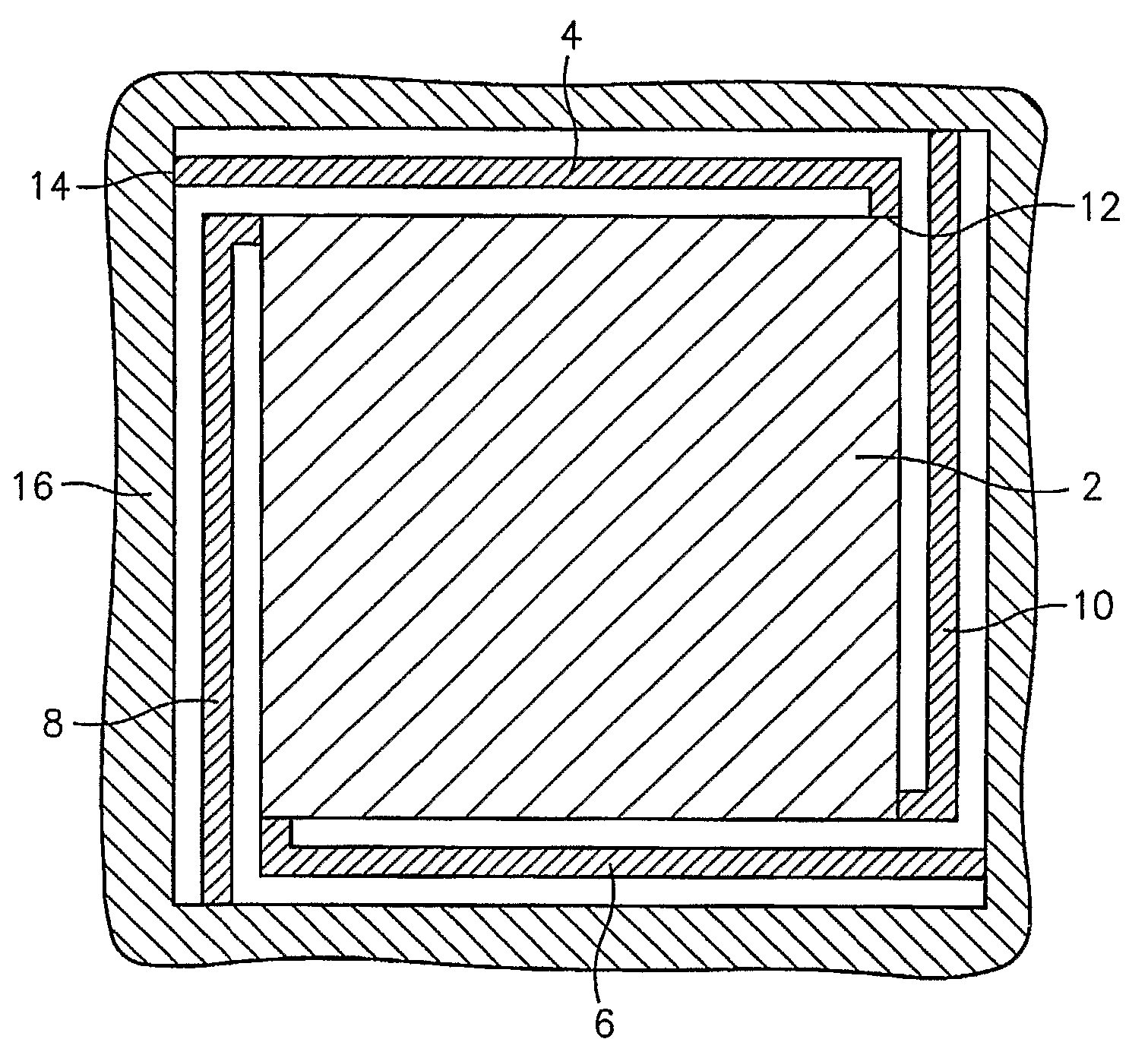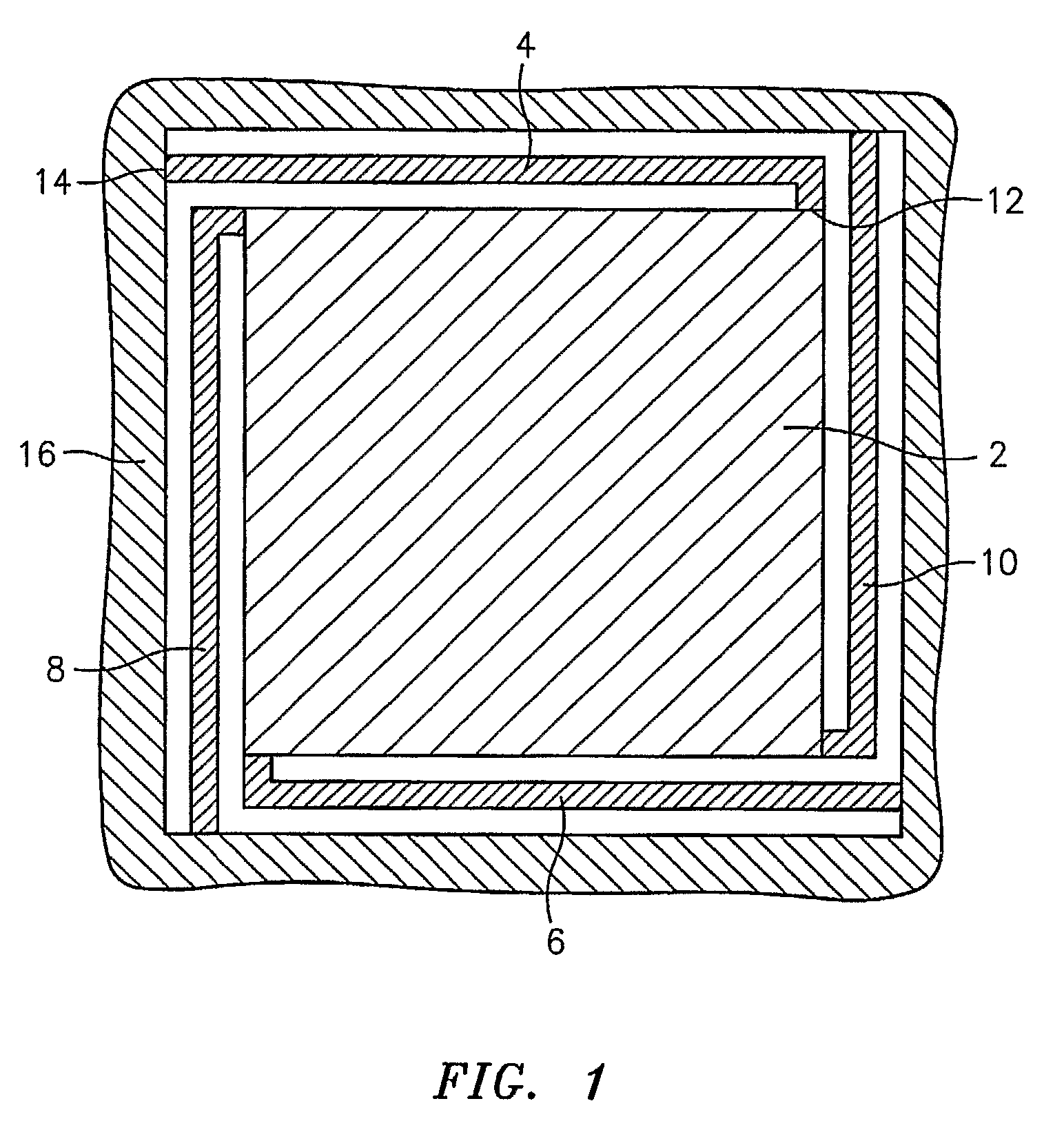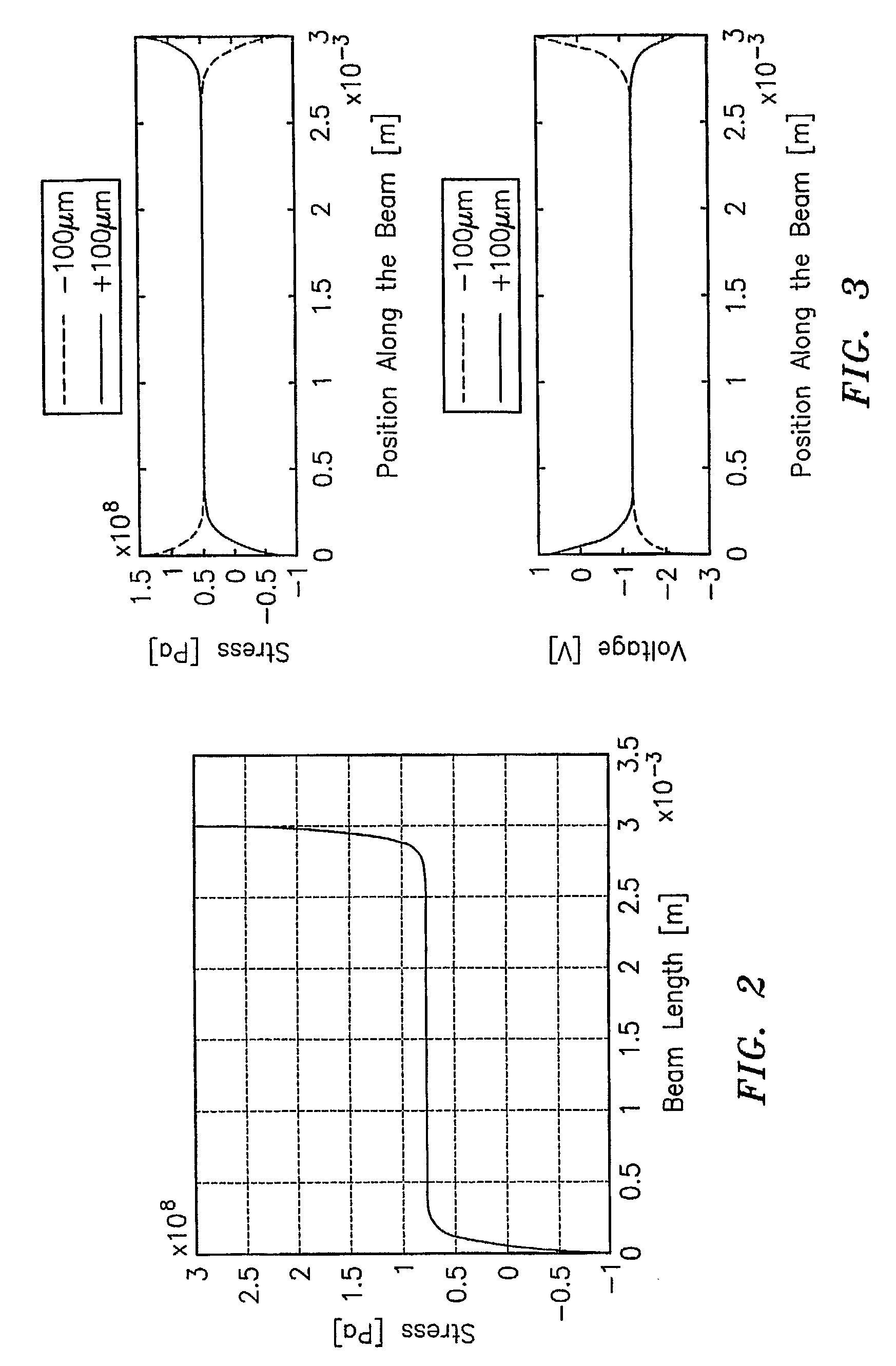Power harvesting scheme based on piezoelectricity and nonlinear deflections
a piezoelectricity and nonlinear deflection technology, applied in the field of energy harvesting devices, can solve the problems of limiting the energy harvesting level, and affecting the efficiency of power harvesting
- Summary
- Abstract
- Description
- Claims
- Application Information
AI Technical Summary
Benefits of technology
Problems solved by technology
Method used
Image
Examples
Embodiment Construction
[0045]The present invention encompasses a micro-scale piezoelectric power harvesting device, similar in design to MEMS piezoelectric accelerometers. A mass is suspended by thin flexural beams from a reference (such as a frame). The base of the frame may be couplable or contactable with or is otherwise in an environment that has ambient vibrations (e.g., the wall of a building, an engine or a motor, inside of a car tire, etc.). As the frame oscillates, the mechanical vibrations are transferred to the suspended mass. In the preferred embodiment, the beams have piezoelectric material on their surfaces. As the beams flex, the piezoelectric material converts oscillatory mechanical stress into oscillatory electric voltages. If a storage capacitor is used to collect the electrical charge, electrical energy can be extracted from the mechanical oscillations. This energy can then be used to power integrated sensors or transmitters, or the like, depending on the target application.
[0046]The pr...
PUM
 Login to View More
Login to View More Abstract
Description
Claims
Application Information
 Login to View More
Login to View More - R&D
- Intellectual Property
- Life Sciences
- Materials
- Tech Scout
- Unparalleled Data Quality
- Higher Quality Content
- 60% Fewer Hallucinations
Browse by: Latest US Patents, China's latest patents, Technical Efficacy Thesaurus, Application Domain, Technology Topic, Popular Technical Reports.
© 2025 PatSnap. All rights reserved.Legal|Privacy policy|Modern Slavery Act Transparency Statement|Sitemap|About US| Contact US: help@patsnap.com



